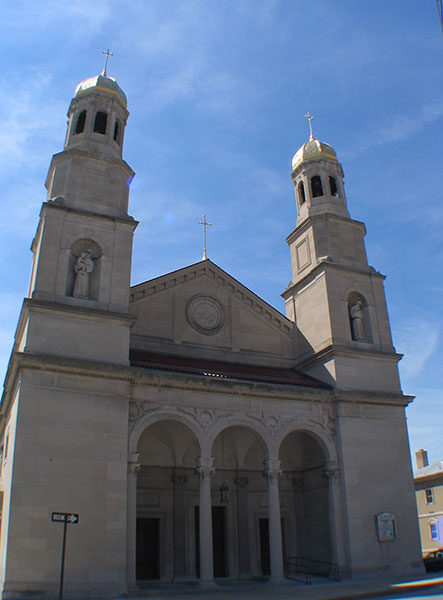
Beacon of the Community
By Jay Parsons
THE BALTIMORE SUN
Above the domes atop Canton’s St. Casimir Roman Catholic Church, more than 100 feet in the air, gusts of wind occasionally send Michael Kramer’s thin flakes of gold flying into the sky.
“There goes a couple bucks,” jokes Kramer, a gilder who is putting the finishing touches on a three-month, $40,000 restoration project at the church that symbolizes the resurgence of St. Casimir and the once-bustling Polish settlement it was built to anchor. After 50 years of slow deterioration, both are growing.
For the Rev. Ross M. Syracuse, the gilding of the domes — part of an overhaul of the church’s exterior that includes structural and masonry work — has particular meaning.
“While aesthetic, the domes are a sign of stability and growth,” said Syracuse, pastor of St. Casimir’s. “This is an external manifestation of what’s happening inside.”
The congregation will celebrate the church’s 100th anniversary in November, and exterior renovations will have been completed by then, serving as symbols of Canton and of St. Casimir’s revitalization during the past decade.
Once the centerpiece of Canton, the church had 5,000 members in the 1930s. With the community’s decay came the decline of St. Casimir. Sunday Mass attendance is 650, up from 550 five years ago, when Syracuse took over at St. Casimir.
“Instead of seeing the old buildings as an albatross around its necks, Canton sees it as a tremendous source of pride,” said John Srygley, architect for the renovations. “The church, the center of the community, is a symbol for that.”
As part of the gilding project, Kramer and his team use brushes to smooth 8-inch-wide sheets of 23.5 karat gold, thinner than aluminum foil. Each 40-square-foot roll is custom-made in Florence, Italy, and costs $600.
Peeling gold sheets off a piece of paper, as if removing adhesive labels, the gilders mold them contiguously across and around domes, each with a surface area of 675 square feet. A belt of jagged designs around the domes slows the project, most of which is done by hand. Rarely does an entire sheet stick, and the rest glides to the ground.
The shimmering gold serves as Syracuse’s vision for the church — a beacon that he hopes will shine as a public reminder of the church’s role in the community.
Syracuse jogs daily five miles to Fort McHenry, stopping to gaze at the sunlit gold exterior. He said, “I can see the outline of the church, and the domes look like a light. I run up there and say, ‘Man, this is … ” Grinning, he doesn’t finish the sentence.
The best view of the domes is from towering temporary scaffolds, where three artisans from the Gilders’ Studio Inc. spent two months stripping and toning the structure before the gold could be applied. The Olney-based company’s resume includes the cross on the Church of the Holy Sepulchre in Jerusalem and the state capitol dome in Atlanta.
Syracuse, an avid rock climber, is one of a few who will be able to view the domes up close. He occasionally climbs to the church’s roof for views of the Inner Harbor to the west and the historic Canton community that has changed drastically since the building’s birth in 1925.
The idea to renovate was conceived during one his treks to the roof. Syracuse spotted decaying joints between the large stones and contacted an architect, who suggested gilding the two domes and cross as part of a four-phase revitalization.
The gilding is the only purely aesthetic stage of the renovations. Most of the process is intended to plug leaks and stop decay.
St. Casimir’s 75-year-old domes were gilded with lower-grade materials in 1982, and the gold quickly blew away. Kramer said his coating will last 35 to 40 years because it is 98 percent gold.
Ream more at: www.baltimoresun.com
